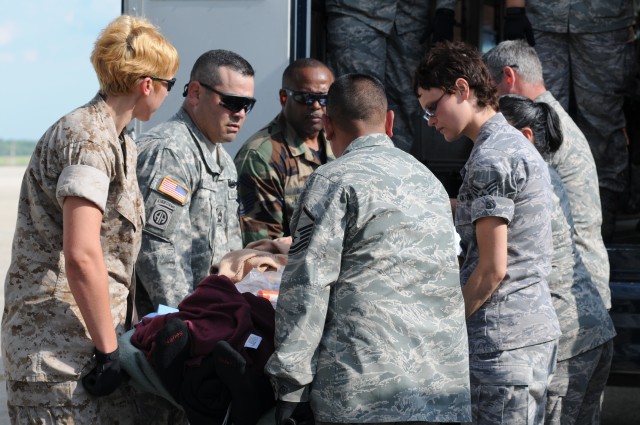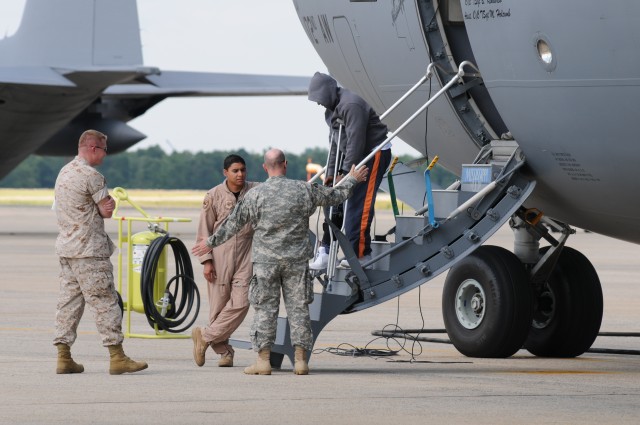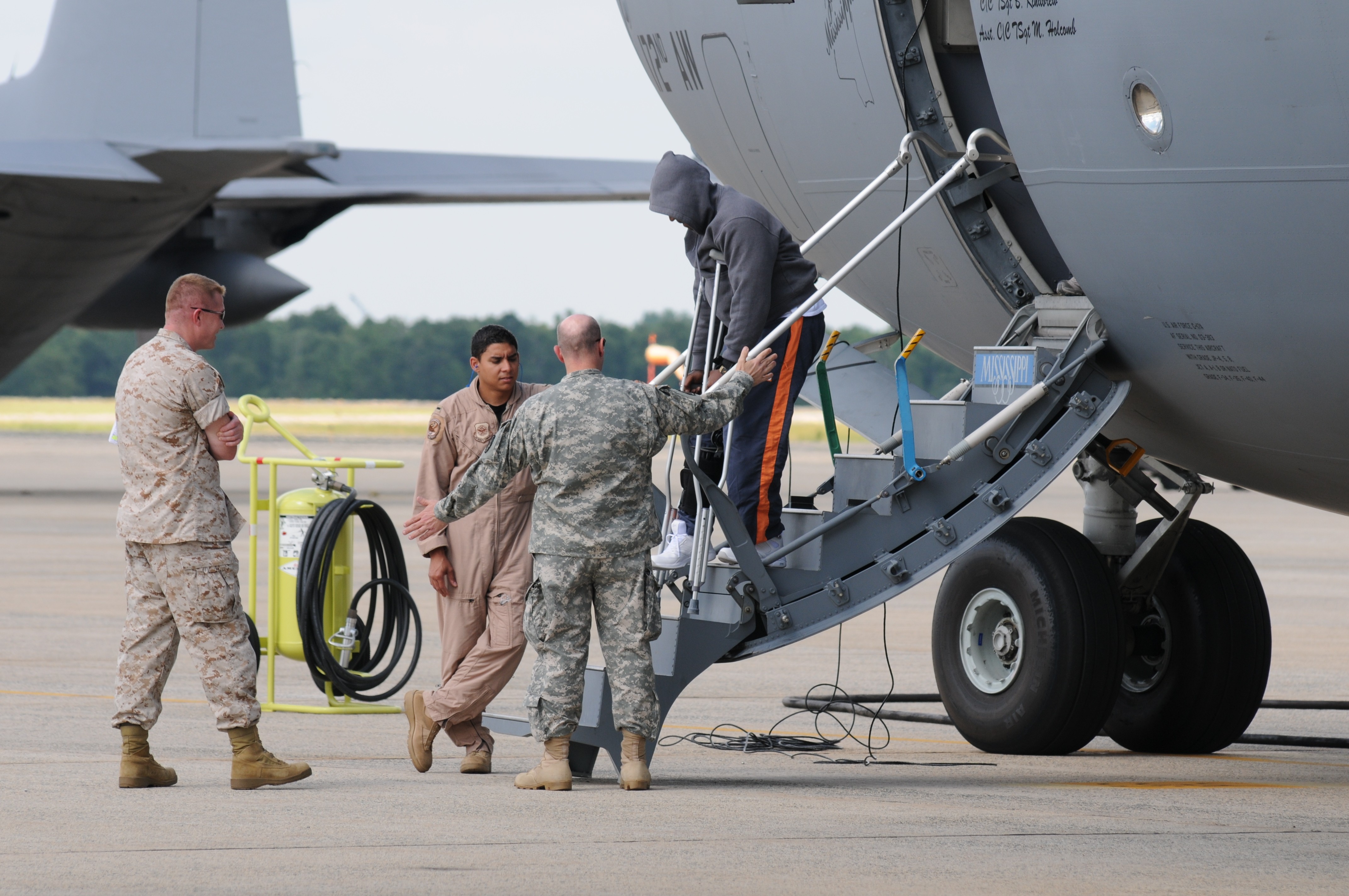WASHINGTON (Army News Service, June 29, 2009) -- Wounded Soldiers sent home from overseas are greeted by their own before they are even off the plane at Andrews Air Force Base, Md.
The ArmyAca,!a,,cs wounded are welcomed back to the country by a team of three Soldiers from the U.S. Army Military District of Washington: the Medical Evacuation to CONUS Hospitals team.
Col. James Conaway, Master Sgt. Jon Taylor and Master Sgt. Juan Reyna act as advocates and liaisons for wounded Soldiers transitioning back to the United States.
Aca,!A"We help to coordinate, communicate and just take care of all the wounded warriors that come back from Landstuhl and Ramstein here to the continental United States,Aca,!A? said Conaway, the team chief.
While the Air Force medical team cares for the Soldiers, the Medical Evacuation team provides the ArmyAca,!a,,cs wounded with support and answers to questions.
Aca,!A"Our job, as a team of senior liaisons, is to make sure that every Army Soldier gets a proper greeting, gets proper care, gets an opportunity to bounce information off of us and then we hand those folks off from us to the warrior transition units,Aca,!A? Conaway said.
Soldiers account for about 80 percent of the returning casualties, but they also have the largest presence overseas, Conaway said.
Deputy Team Chief Taylor explained part of the teamAca,!a,,cs job is to give the wounded back a sense of being a part of something larger.
While Soldiers are healthy and active, they are a part of teams, brigades, divisions, etc. But, the connection changes once an injury occurs, Taylor said.
Aca,!A"YouAca,!a,,cre an integrated piece until you get hurt,Aca,!A? he said. Aca,!A"Then youAca,!a,,cre pulled away from the rest of those pieces and youAca,!a,,cre kind of out there on your own.Aca,!A?
In 2004, the director of the Army Staff determined that a larger Army presence was needed to welcome home the wounded, according to Taylor, who was on the team at its conception.
The team responds three times a week to meet every plane carrying wounded warriors home. Before the plane even lands, every SoldierAca,!a,,cs next destination is mapped out by the teams, according to Reyna, the team noncommissioned officer in charge.
Some of the patients are helped off the plane and moved to a waiting medical vehicle that transports them immediately to area hospitals, such as Walter Reed Army Medical Center or the National Naval Medical Center in Bethesda.
All other wounded warriors stay on base at the 779th Medical Unit of Malcolm Grow Medical Center where they spend the night.
Aca,!A"We try to make them as comfortable as possible,Aca,!A? Reyna said.
Once inside, the Soldiers are medically assessed and the American Red Cross provides them with anything they could want Aca,!" new clothes, shoes, razors, hot meals and soft drinks.
The wounded warriors also have access to a community room with a large-screen television, recliners, video games, Internet access, a fully stocked kitchenette and the company of other Soldiers, according to Red Cross worker Tim Sumner, a retired sailor.
Aca,!A"Our first job is to get them talking and get rid of the thousand-yard stare and make sure they understand that things are going to get better,Aca,!A? said Sumner.
After about 24 hours at the transitional facility, the Soldiers are transferred to hospitals based on their medical needs and proximity to family and their home base.




Social Sharing